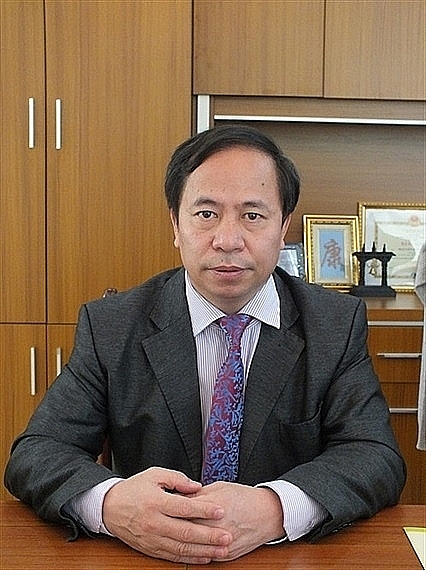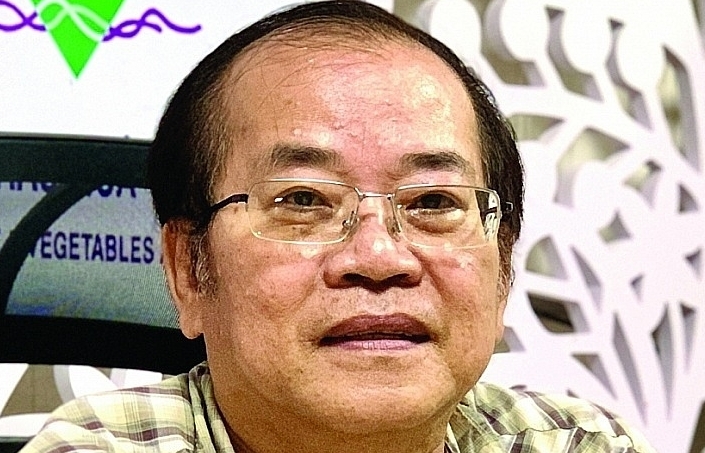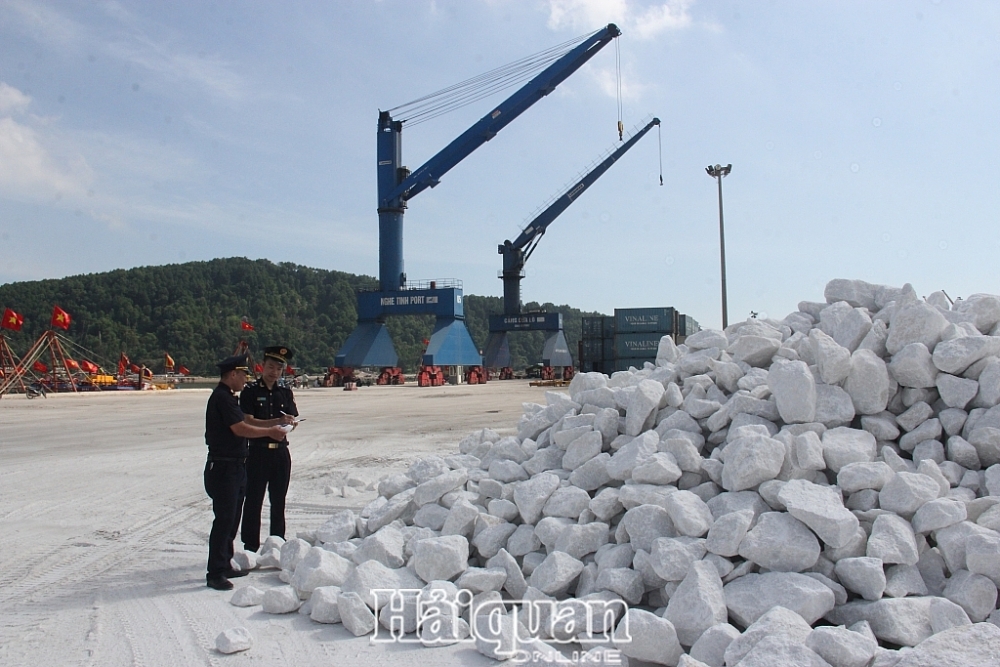Agricultural products for export can be affected if there is no seed copyright
 |
| Prof. Dr. Nguyen Hong Son, Director of the Vietnam Institute of Agricultural Sciences. |
Could you tell us more about the commercial situation of VAAS's plant varieties?
According to statistics, in 2011-2020, member units of VAAS carried out 227 research tasks related to plant breeding and selection.
As a result of these scientific and technological tasks, 390 plant varieties have been recognized for circulation in Vietnam.
Although the number of recognized varieties is quite large, the number of varieties capable of commercialization and copyright exploitation cooperation with enterprises is quite low.
In the past 10 years, 79 varieties have been commercialized and are under commercial negotiation, accounting for 20.25% of the total number of varieties recognized, including six fruit varieties, 35 rice varieties and 38 maize varieties.
Of the 79 varieties being traded, 67 varieties were transferred to enterprises, three varieties were in the negotiation phase, eight varieties were transferred to state-owned non-business units and one variety was transferred to Laos.
Thus, it can be seen that the recipients of seed transfer are mainly enterprises producing and trading plant varieties or products from plant varieties, not selling directly to farmers. Therefore, enterprises are obliged to contribute to copyright to breed research agencies in accordance with the provisions of current law.
What is the significance of the transfer of breed copyright for research and breeding work in Vietnam?
According to the experience of research institutes in the country and countries in the region, in order to create a high-quality rice variety from hybridization to being recognized for circulation, it takes 10 years of continuous research with a budget of 16 years, costing VND 20 billion. For long-term fruit trees to create a good variety, it needs a period of at least 15 years.
Thus, in order to have a good variety with being capable of commercialization and wide application in production, it is necessary to have a long enough, continuous breeding research process with a sufficiently large and stable budget.
The fact shows that a number of good varieties created and commercialized in the past period are products that are not only crystallized from the funds allocated to implement topics and projects but also must have the inheritance of previous research periods, and at the same time with the contributions of the lead unit, the individual director and the passion of the research staff.
It is necessary to assign the right to register for protection and exercise the rights of the owner of the protection certificate for the plant varieties created from the state budget to the organizations and individuals that are in charge of the topics and projects in accordance with the provisions of Vietnamese law on intellectual property. It is of great significance to help public science and technology organizations develop good-quality plant varieties. At the same time, it is necessary to create a motivation to attract investment of non-budget capital for the breeding of plant varieties in accordance with the policy of socialization of scientific research.
In addition, the current budget allocated to pay salaries and operate the VAAS apparatus only meets 54.3% of the actual demand. Therefore, this transfer also generates revenue for public scientific organizations to gradually implement the autonomy mechanism; generate revenue for the state budget to reinvest in research through tax deductions from trade in plant varieties. This will also create a motivation to encourage organizations and individuals to register for the protection of intellectual property rights outside of Vietnam's territory in accordance with Vietnam's Intellectual Property Law and international conventions, thereby creating a force to develop the knowledge economy.
What lessons can be learned from the controversy surrounding the red flesh dragon fruit variety LD1?
Vietnamese enterprises are leading farmers to join the international market. There, international practices and technical barriers are a big challenge for our agricultural products; especially in the context that we are facing a small, fragmented production with many households participated by farmers.
Along with a series of regulations such as plant quarantine, quality, food hygiene and safety, the enforcement of copyright, the regulations of the exporting and importing countries for plant varieties are also a technical barrier. These are available in the regulations of many importing countries. It must be fully represented in the traceability record.
In our country, plant variety copyright is governed by two systems of law, in which the Law on Cultivation regulates the act of producing and trading plant varieties. Accordingly, only organizations and individuals that have registered for recognition of circulation or self-declared circulation of plant varieties or authorized persons may produce and trade seeds and seedlings of such plant varieties. The Law on Intellectual Property covers more broadly the rights of protection certificate holders, whereby organizations and individuals that are protection title holders not only have the right to produce and trade plant varieties but also have rights to products from that plant variety.
Besides enforcing the regulations of Vietnam, we also need to understand and fully enforce the regulations of the importing country; regulations of the countries that are the owners of the plant variety. If we do not fully comply with the copyright regulations, we will not only be fined by the owners for using their plant varieties without permission, but Vietnamese shipments may also be refused export.
These regulations may also change from time to time, so farmers need to be prepared for international parameters that many countries have applied to avoid being passive like LD1 dragon fruit. We are not surprised that many flower farmers in Lam Dong have used Japanese flower varieties to grow and sell in the country but cannot export to Japan because they do not have seed copyright.
From those requirements, before planting a crop, farmers always have to find a partner to sign a consumption contract, find the origin of the plant variety and the regulations of the importing countries. It is necessary to carefully find out the seeding producers to buy seeds if the seedling production or trading establishment is the owner of the plant variety or authorized by the owner, if the plant variety has been recognized for storage legally in Vietnam or has been protected.
At the same time, farmers also need to keep sales invoices, including even signing contracts, and be held responsible to confirm that they can legally use seedlings and products produced from seedlings.
Through this incident, management agencies, research institutes and associations also need to organize more forums to raise awareness for farmers, businesses, and especially small businesses about the best international practices when participating in the export of agricultural products, including copyright of plant varieties.
Related News

Complying with regulations of each market for smooth fruit and vegetable exports
13:06 | 09/01/2025 Import-Export

Increasing consumption demand, steel enterprises have many opportunities
07:43 | 31/12/2024 Import-Export

The Middle East: a promising seafood export market for Vietnam
07:43 | 31/12/2024 Import-Export

Export tax rates of 13 commodity codes to increase to 20% from January 1, 2025
13:46 | 28/12/2024 Regulations
Latest News

Việt Nam tightens fruit inspections after warning from China
08:01 | 15/01/2025 Import-Export

Brand building key to elevate Vietnamese fruit and vegetable sector: experts
08:00 | 15/01/2025 Import-Export

Freight transport via China-Việt Nam cross-border trains posts rapid growth
08:01 | 13/01/2025 Import-Export

Vietnamese retail industry expects bright future ahead
06:22 | 11/01/2025 Import-Export
More News

Fruit and vegetable industry aims for $10 billion in exports by 2030
15:12 | 07/01/2025 Import-Export

GDP grows by over 7 per cent, exceeds target for 2024
15:11 | 07/01/2025 Import-Export

Vietnamese pepper: decline in volume, surge in value
15:10 | 07/01/2025 Import-Export

Việt Nam maintains position as RoK’s third largest trading partner
15:09 | 07/01/2025 Import-Export

Greater efforts to be made for stronger cooperation with European-American market
15:08 | 06/01/2025 Import-Export

Leather, footwear industry aims to gain export growth of 10% in 2025
15:06 | 06/01/2025 Import-Export

Grasping the green transformation trend - A survival opportunity for Vietnamese Enterprises
14:53 | 06/01/2025 Import-Export

Việt Nam to complete database of five domestic manufacturing industries in 2026
20:57 | 05/01/2025 Import-Export

Logistics firms optimistic about growth prospects in 2025: Survey
20:54 | 05/01/2025 Import-Export
Your care

Việt Nam tightens fruit inspections after warning from China
08:01 | 15/01/2025 Import-Export

Brand building key to elevate Vietnamese fruit and vegetable sector: experts
08:00 | 15/01/2025 Import-Export

Freight transport via China-Việt Nam cross-border trains posts rapid growth
08:01 | 13/01/2025 Import-Export

Vietnamese retail industry expects bright future ahead
06:22 | 11/01/2025 Import-Export

Complying with regulations of each market for smooth fruit and vegetable exports
13:06 | 09/01/2025 Import-Export
